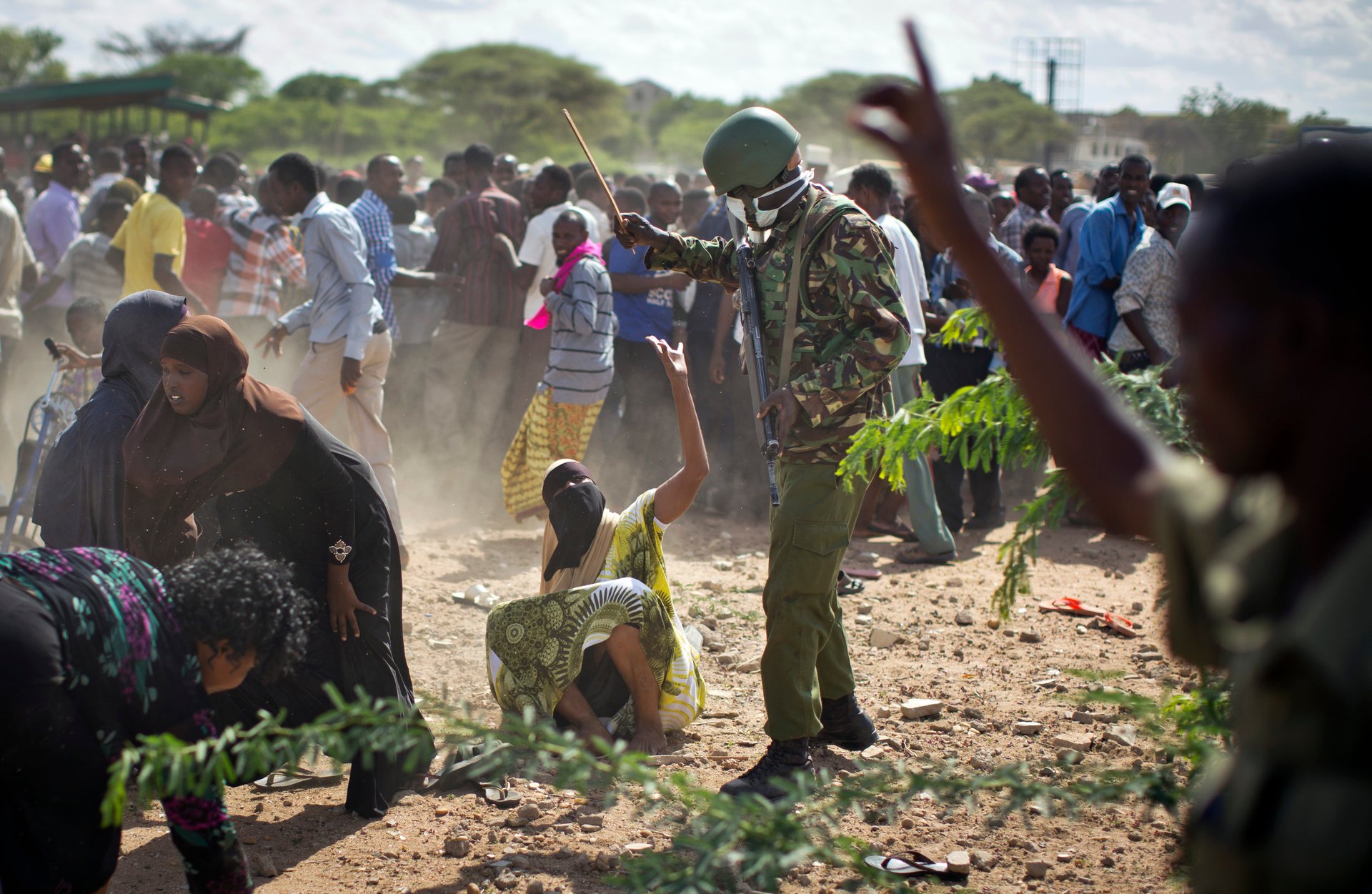My home town Garissa will suffer again at the hands of Kenyan authorities, but it won’t make our country safer
I was born in Garissa, northeast Kenya, into a pastoralist family. My parents migrated to this land from parts of the greater Somali land which was under a British protectorate. Some of my relatives live across the border in Somalia. Growing up, Garissa was heavily militarized because of the effect of a secessionist struggle. It made life hard for many to live under such climate. But my family did not give up on Garissa.


I was born in Garissa, northeast Kenya, into a pastoralist family. My parents migrated to this land from parts of the greater Somali land which was under a British protectorate. Some of my relatives live across the border in Somalia. Growing up, Garissa was heavily militarized because of the effect of a secessionist struggle. It made life hard for many to live under such climate. But my family did not give up on Garissa.
On April 2 nearly 150 young people were killed when a gang of heavily armed men from the Somali Islamist al-Shabaab militant group stormed our local university. It was the latest in a string of retaliatory attacks on Kenya for our military’s incursion into strongholds of Somalia currently controlled by al-Shabaab. My fear now is that the Kenyan government’s reaction of using military force in Somalia and at home against Somali-Kenyans will reopen decades of hurt and only radicalize more young men.
My town Garissa has taken the brunt of al-Shabaab’s retaliatory attacks. Our proximity to war-torn Somalia makes it ideal for the group’s plans. But a history that runs deep in here may also play a role. The region’s population is ethnic Somalis that have been marginalized by successive Kenyan governments. Until recent years, the region was constantly under emergency laws.
When Kenya got its independence from Britain in 1963, Garissa–which was part of the British-controlled Northern Frontier District–was put up for referendum. Majority of its residents expressed willingness to join their brethren across the border in Somalia. But that did not happen. The British administration instead handed the control to the government in Nairobi. What followed was the secessionist war described as the ‘Shifta war’ that planted a mistrust that runs deep and still flourishes in Kenyan society.
Kenyan government had a script on how to deal with the region. Any insecurity incident is met with an aggressive response that usually ends badly. Massacres occurred and abuses were meted out to civilian population on a daily basis. Our house was once torched by security forces in an operation locals dubbed “Garissa Gubay”. To the authorities, it was the only way of dealing with us. We came to live with it and grew up thinking camouflage uniforms of security agents were symbols of authority
With the war in Somalia in 1990s, came our brethren from Somalia. Dadaab, an area within Garissa, was selected to host our brothers from Somalia, becoming the world’s largest refugee complex. We mingled and intermarried. And our way of life has never altered. But the rest of Kenya saw the arrival of Somali refugees through the prism of the Shifta war. To them we were one and the same–and we understand. A Somali, wherever he is in the world is not defined by the papers he holds but by his origin.
For centuries we have been nomads, criss-crossing the colonial-drawn boundaries that separates nations in the Horn of Africa. Our livelihood is sustained by livestock. It is a source of pride and wealth. Migrations happen in seasons, herders look for pasture wherever they can find. Sometimes competition for grazing lands become fierce and may lead to conflict. And many a times it is managed and solved.
However, the current security problems that are engulfing the northeastern region are mainly brought about by bad decisions made by a few in Nairobi with the seal of approval from the so-called international community. Kenya, which had long been described as the oasis of peace in a volatile region, provided safe haven to refugees fleeing conflict in their countries. The peaceful atmosphere was shattered in 2011 when it decided to militarily interfere in the affairs of her war-torn neighbor, Somalia.
Ever since the operation was launched, my hometown has been turned into a battle zone.The heavy-handed approach by Kenyan security forces often fuel resentment that plays well with al-Shabaab recruitment strategy. And many of youth from my town have taken up the call to fight alongside al-Shabaab.
Garissa is a shell of her former self. Road blocks everywhere, dusk to dawn curfew imposed and security raids are daily routine. Once again, Somali Kenyans are in the spotlight. Not for the Shifta war that our forefathers fought but a proxy war that Kenya wages on behalf of Western powers. And the threat of al-Shabaab looms everywhere in this region.
With the report of one of attackers of Garissa University being a Somali Kenyan, however painful it can be, the decades old wounds will surely be opened once again. And loyalty of Somalis will be put to test. Already Somali Kenyan leaders have come out and said they will name sympathizers, fighters and financiers of al-Shabaab in our midst. They also call for the closure of Dadaab refugee complex. Meanwhile the Kenyan government is stopping vital international money remittances reaching the Somali community.
They have one month to do it right, it appears too long for many in Garissa like me to see this problem disappear. But in reality, it won’t until Nairobi sees beyond chest thumping in confronting al-Shabaab. Or recall troops from Somalia and fortify the border. It will be a wise and honorable decision to protect the lives of our sacred citizens.